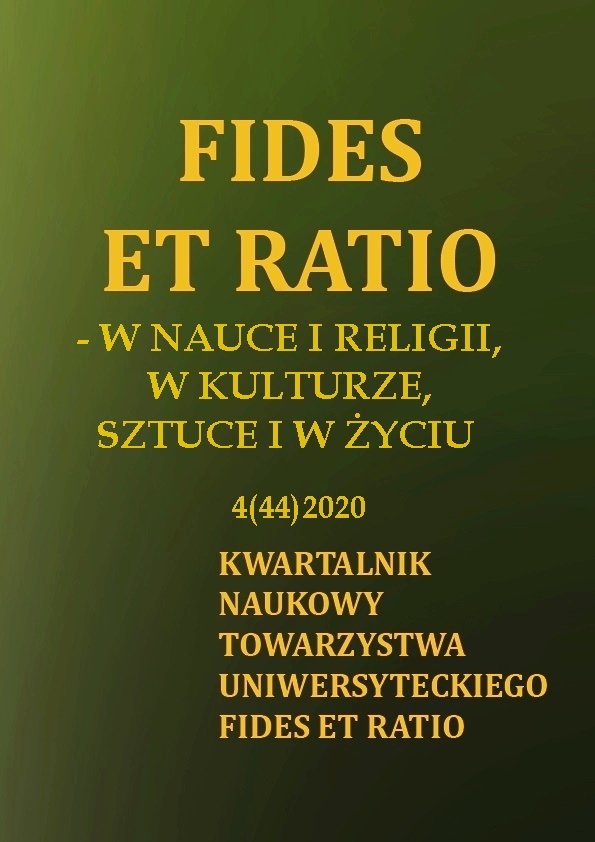Abstrakt
Artykuł jest próbą zaprezentowania pewnego sposobu badania przedstawień ikonograficznych pokazujących taniec średniowieczny. Autor_ka na początku zarysowuje konteksty tańca i wyróżnia źródła z nim związane: źródła teoretyczne, literackie, muzyczne i ikonograficzne. Następnie skupiając się na źródłach ikonograficznych zachowanych w rękopisach z epoki prezentuje, w jaki sposób można wykorzystać badania sfery wizualnej tańca w zrozumieniu tego fenomenu. Odwołuje się w tym do trzech znanych dziś form przestrzennych tańca wieków średnich: tańca łańcuchowego, w parach i solowego. Autor_ka zwraca także uwagę na trudności napotkane przy badaniu ikonografii tańca średniowiecznego oraz samego tańca, a także na przeszkody stojące na drodze do współczesnych rekonstrukcji tego typu tańców.
Bibliografia
- Arcangeli, A. (1994). Dance under Trial: The Moral Debate 1200–1600, Dance Research: The Journal of the Society for Dance Research t. 12, nr 2, s. 127–155.
- Backman, E. L. (1952). Religious Dances in the Christian Church and in Popular Medicine. Tłum. E. Classen. London: George Allen & Unwin Ltd.
- Camille, M. (1992). Images on the Edge. The Margins of Medieval Art. London: Reaktion Books Limited.
- Camille, M. (1996). Gothic Art. Visions and Revelations of the Medieval World, London: Calmann and King Ltd.
- Duhamel-Amado, C., Brunel-Lobrichon, G. (2000). Życie codzienne w czasach trubadurów. Tłum. A. Loba, Poznań: Wydawnictwo Moderski i S-ka.
- Harthan, J. (1983). An Introduction to Illuminated Manuscripts, London: HM’s Stationary Office.
- Heers, J. (1995). Święta głupców i karnawały, przeł. G. Majcher, Warszawa: Oficyna Wydawnicza Volumen, Wydawnictwo Marabut.
- Klimczyk, W. (2015). Wirus mobilizacji. Taniec a kształtowanie się nowoczesności (1455–1795). T. 1, Dworskie kroki. Kraków: Universitas.
- Lecoy de la Marche, A. (1868). La Chaire française au Moyen Âge, spécialement au XIIIe siècle, ďaprès les manuscrits contemporains, Paris.
- McGee, T. J. (1989) Medieval Instrumental Dances. Bloomington and Indianapolis: Indiana University Press.
- Meyer-Brown, H., Polk, K. (2001). Instrumental Music, c.1300–c.1520, (w:) R. Strohm and B. J. Blackburn (red.), The New Oxford History of Music. Music as Concept and Practice in the Late Middle Ages, t. III, cz. I, s. 97–161, New York: Oxford University Press.
- Mullally, R. (1986). Cançon de Carole, Acta Musicologica, nr 58, s. 224–231.
- Mullally, R. (1988). Johannes de Grocheo’s ‘Musica Vulgaris’, Music & Letters, t. 79, nr 1, s. 1–25.
- Mullally, R. (2016). The Carole. A Study of Medieval Dance. London and New York: Routledge.
- Neville, J. (2008). Dance Performance in the Late Middle Ages: a Contested Space, (w:) E. Gertsman (red.), Visualizing Medieval Performance. Perspectives, Histories, Contexts, s. 295–310, Burlington: Ashgate.
- Neville, J. (2004). The Eloquent Body. Dance and Humanist Culture in Fifteenth-Century Italy, Indiana University Press, Bloomington and Indianapolis.
- Peterson Royce A. (2014). Antropologia tańca, przeł. J. Łumiński, Wydawnictwa Uniwersytetu Warszawskiego, Warszawa.
- Platon. (1956). Laws, tłum. R. G. Bury, t. I, Cambrigde, Massachusetts: Harvard University Press, London: William Heinemann Ltd.
- Rimmer, J. (1985). Dance Elements in Trouvère Repertory, Dance Research: The Journal of the Society of Dance Research t. 3, nr. 2, s. 23–34.
- Rimmer, J. (1991). Medieval Instrumental Dance Music, Music & Letters, t. 72, nr 1, s. 61–68.
- Rust, F. (1969). Dance in Society. An Analysis of the Relationship between the Social Dance and Society in England from the Middle Ages to the Present Day. New York & London: Routledge, Taylor & Francis Group.
- Seebass, T. (1991). Iconography and Dance Research, Yearbook for Traditional Music, nr 23, s. 33–51.
- Schmitt, J.-C. (2006). Gest w średniowiecznej Europie, Tłum. H. Zaremska, Warszawa: Oficyna naukowa.
- Ziolkowski, J. (2018). The Juggler of Notre Dame and the Medievalizing of Modernity. Volume 1: The Middle Ages, Cambridge: Open Book Publishers.
Teksty źródłowe:
- Cornazano, Libro dell’arte del danzare, 1455, Biblioteca Apostolica Vaticana, ms Capponiani 203.
- da Pesaro, G. E., De pratica seu arte tripudii, 1463, Bibliothèque national de Paris, fonds ital. 973.
- da Piacenza, D. De arte saltandi et choreas ducendi, ok. 1455, Bibliothèque nationale de Paris, fonds ital. 973.
- de Lorris, G. de Meun, J. (1997) Powieść o Róży, przeł. i wstęp M. Frankowska-Terlecka i T. Giermak-Zielińska, Warszawa: Państwowy Instytut Wydawniczy.
Ilustracje:
1 – Powieść o Róży, 1325–50, British Library, Stowe 947, fol. 7r
2 – Godzinki Joanny II z Nawarry, ok. 1340, Bibliotheque national de France, ms. nouv. acq. lat. 3145, fol. 53r
3 – Powieść o Róży, ok. 1490–1500, British Library, Harley 4425, fol. 14v
4 – Smithfield Decretals, ok. 1300–1340, British Library, Royal MS 10 E IV, fol. 58r
5 – Godzinki z Taymouth, 1325–1350, British Library, Yates Thompson 13, fol. 106v
6 – Recueil – Poésies françaises du XIIIe siècle, 1250–1300, Bibliothèque nationale de France, MS Arsenal 3516, fol. 127r
7 – Le Mirouer historial de Vincent de Beauvais, trad. Jehan du Vignay, XV w., Bibliothèque nationale de France, MS Français 50, fol. 52r
